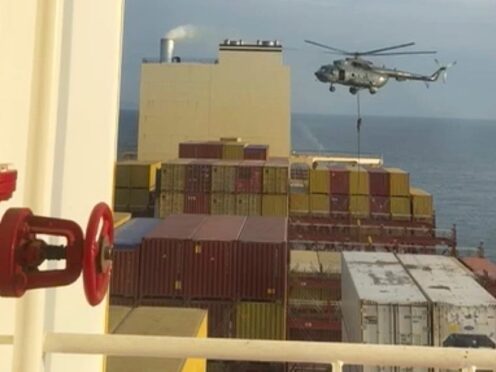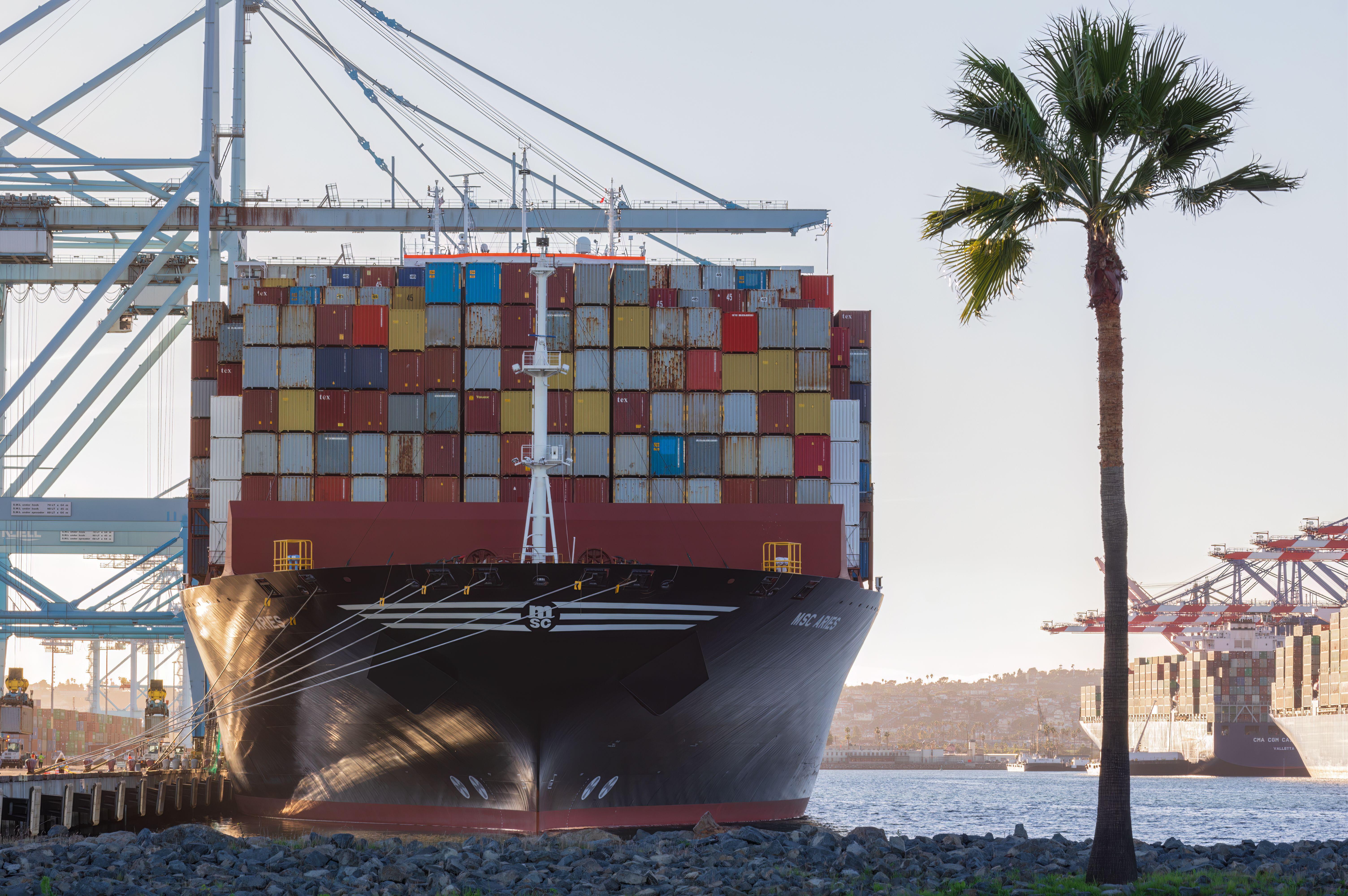
Commandos from Iran’s paramilitary Revolutionary Guard have dropped from a helicopter on to an Israeli-affiliated container ship near the Strait of Hormuz and seized the vessel, in the latest in a series of attacks between the two countries.
The Middle East had braced for potential Iranian retaliation over a suspected Israeli strike earlier this month on an Iranian consular building in Syria that killed 12 people, including a senior Guard general who once commanded its expeditionary Quds Force there.
The Israeli war on Hamas in the Gaza Strip meanwhile is now six months old and is inflaming decades-old tensions across the whole region.
With Iranian-backed forces like Hezbollah in Lebanon and Yemen’s Houthi rebels also involved in the fighting, any new attack in the Middle East threatens to escalate that conflict into a wider regional war.
Iran’s state-run IRNA said a special forces unit of the Guard’s navy carried out the attack on the vessel, which other media in the country widely identified as the Portuguese-flagged MSC Aries, a container ship associated with London-based Zodiac Maritime.

Zodiac Maritime is part of Israeli billionaire Eyal Ofer’s Zodiac Group.
Geneva-based MSC later acknowledged the seizure and said 25 crew had been aboard the vessel. IRNA said the Guard would take the vessel into Iranian territorial waters.
Earlier, a Middle East defence official shared a video of the attack with the Associated Press, showing the Iranian commandos rappelling down on to a stack of containers on the deck of the vessel.
A crew member on the ship can be heard saying: “Don’t come out,” and tells colleagues to go to the ship’s bridge as more commandos come down on the deck. One commando can be seen kneeling above the others to provide potential cover fire.
The video corresponded with known details of the MSC Aries. The helicopter appeared to be a Soviet-era Mil Mi-17 helicopter, which the Guard and the Iranian-backed Houthis of Yemen have used to conduct raids on ships.
The British military’s United Kingdom Maritime Trade Operations described the vessel as being “seized by regional authorities” in the Gulf of Oman off the Emirati port city of Fujairah.
The MSC Aries had been last located off Dubai heading towards the Strait of Hormuz on Friday. The ship had turned off its tracking data, which has been common for Israeli-affiliated ships moving through the region.
Iran since 2019 has engaged in a series of ship seizures and attacks on vessels have been attributed to it amid tensions with the West over its rapidly advancing nuclear programme.
In previous seizures, Iran has offered initial explanations about their operations to make it seem like the attacks had nothing to do with the wider geopolitical tensions — though later acknowledging as much. In Saturday’s attack, however, Iran offered no explanation for the seizure other than to say the MSC Aries had links to Israel.
For days, Iranian officials including Supreme Leader Ayatollah Ali Khamenei have been threatening to “slap” Israel for the Syria strike. Western governments have issued warnings to their citizens in the region to be prepared for attacks.
However, Iran in the past has largely avoided directly attacking Israel, despite it carrying out the targeted killing of nuclear scientists and multiple sabotage campaigns against Iran’s atomic sites. Iran has targeted Israeli or Jewish-linked sites through proxy forces over the decades.
Earlier this week, Guard General Ali Reza Tangsiri, who oversees its naval forces, criticised the presence of Israelis in the region and in the United Arab Emirates. The UAE reached a diplomatic recognition deal with Israel in 2020, something that long has enraged Tehran.
“We know that bringing Zionists in this point is not merely for economic work,” he reportedly said. “Now, they are carrying out security and military jobs. This is a threat, and this should not happen.”
The Gulf of Oman is near the Strait of Hormuz, the narrow mouth of the Persian Gulf through which a fifth of all globally traded oil passes. Fujairah, on the United Arab Emirates’ eastern coast, is a main port for ships to take on new oil cargo, pick up supplies or trade out crew.
Since 2019, the waters off Fujairah have seen a series of explosions and hijackings. The US Navy blamed Iran for limpet mine attacks on vessels that damaged tankers. The UAE has sought to mend ties with Iran and issued a statement condemning the suspected Israeli attack in Syria.

Enjoy the convenience of having The Sunday Post delivered as a digital ePaper straight to your smartphone, tablet or computer.
Subscribe for only £5.49 a month and enjoy all the benefits of the printed paper as a digital replica.
Subscribe